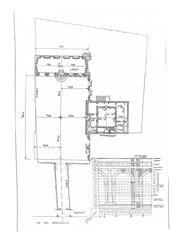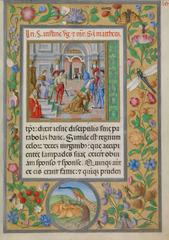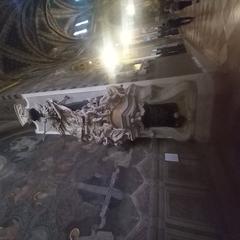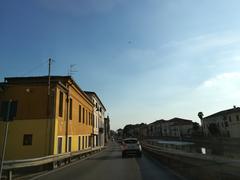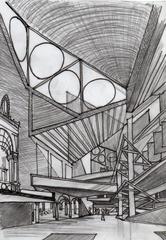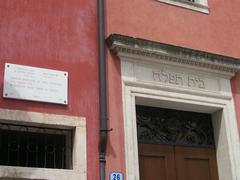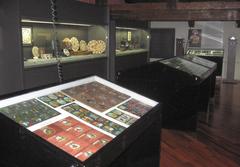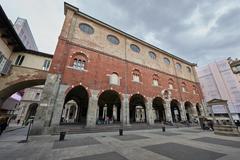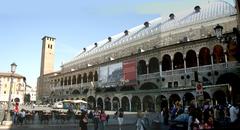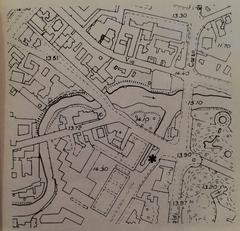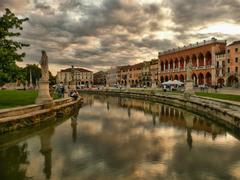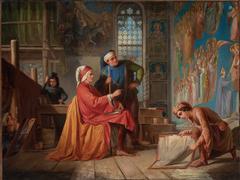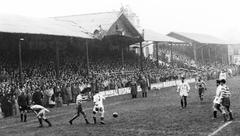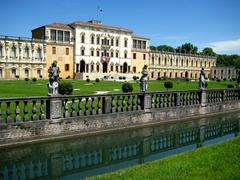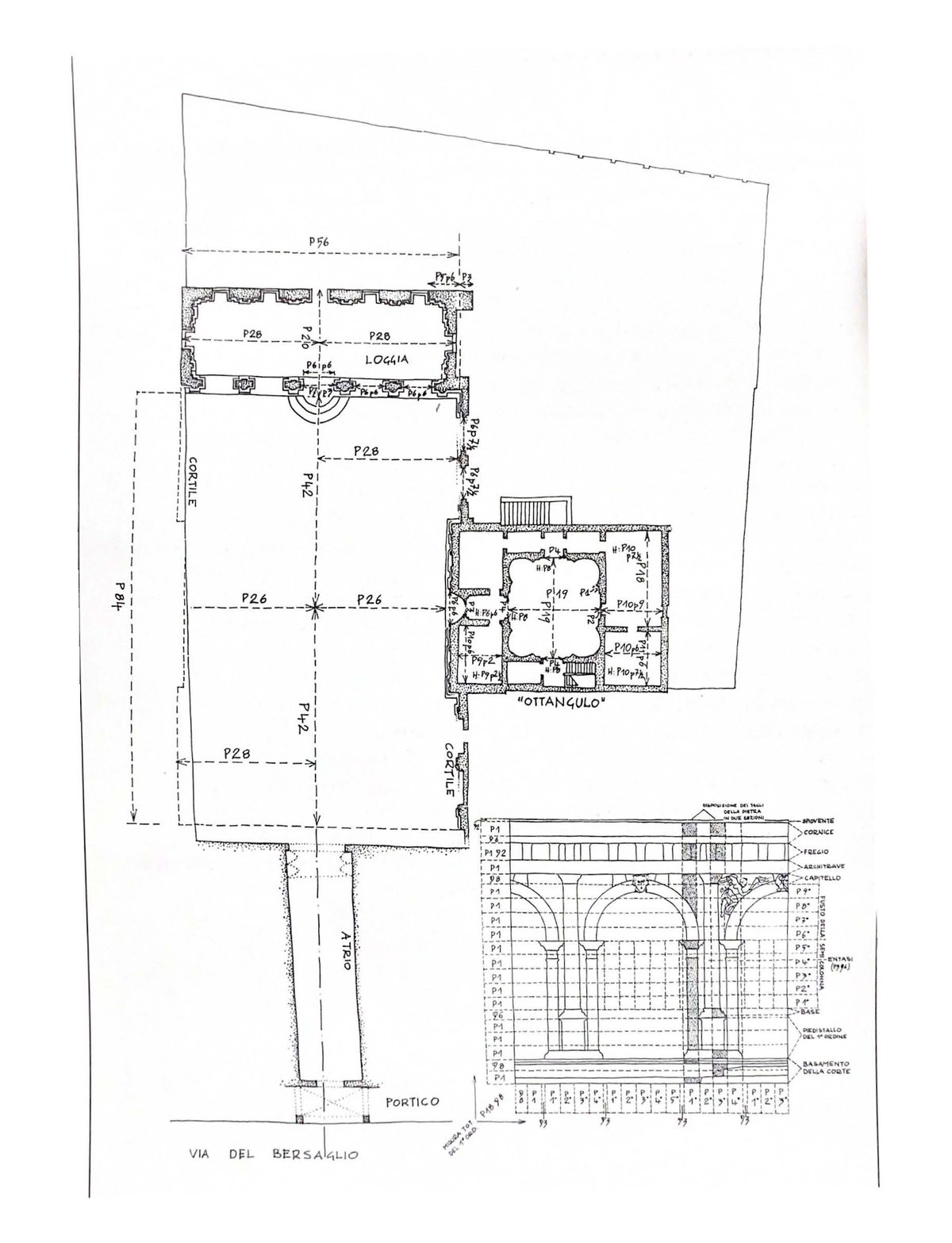
Comprehensive Guide to Visiting Loggia e Odeo Cornaro, Padua, Italy
Date: 25/07/2024
Introduction
Nestled in the heart of Padua, Italy, the Loggia e Odeo Cornaro represent two of the city’s most precious Renaissance gems. These architectural marvels, constructed in the 16th century, offer a window into the humanist ideals and cultural vibrancy of their time. Commissioned by Alvise Cornaro, a notable patron of the arts, and designed by the esteemed architect Giovanni Maria Falconetto, the Loggia and Odeo Cornaro stand as a testament to the enduring legacy of Renaissance art and thought (source). This comprehensive guide aims to provide a deep dive into the rich history of these structures, equip prospective visitors with essential information, and highlight the unique cultural experiences they offer. Whether you are an architecture enthusiast, a history buff, or simply a curious traveler, the Loggia e Odeo Cornaro promise an enriching and unforgettable visit.
Table of Contents
- Introduction
- History
- Visitor Information
- Special Events and Guided Tours
- Photographic Spots
- Conclusion
- FAQ
History
Origins and Construction
The Loggia and Odeo Cornaro are located in the eastern part of Padua’s historical center, near the Basilica of Saint Anthony of Padua. Commissioned by Alvise Cornaro in the first half of the 16th century, these structures were part of a larger complex of buildings and gardens situated in Cornaro’s vast park on Via del Bersaglio, now Via Melchiorre Cesarotti (source).
The Loggia was constructed beginning in 1524, designed by the architect Giovanni Maria Falconetto from Verona. Falconetto’s design, inspired by classical Greek and Roman models, reflects the humanist ideals shared by Falconetto and Cornaro (source).
Architectural Significance
The Loggia features a rectangular structure with two distinct orders. The lower order has five round arches with composite pillars and Tuscan semi-columns. An entablature with a Doric frieze rests on these pillars, while the central arch is adorned with winged Victories and a protruding architrave. The upper order showcases a loggia with three openings, embellished with Ionic pilasters and classical masks (source).
The Odeo Cornaro
Constructed around 1534, the Odeo was designed for music and poetic recitations. Its acoustics were particularly well-designed, making it an ideal venue for performances. From 1540, the Odeo became the seat of the Academy of the Burning Ones (Accademia degli Infiammati), a philosophical and literary academy in Padua (source).
Cultural and Historical Context
The construction of the Loggia and Odeo took place during a period of significant political and cultural change in Padua. Despite the city’s political instability following the 1509 siege by Emperor Maximilian I, this period saw a flourishing of architectural innovation. Alvise Cornaro, a nobleman and patron of the arts, created a cultural hub at his residence where artists and intellectuals could converge (source).
Influence and Legacy
The Loggia and Odeo Cornaro introduced new architectural paradigms to Padua, drawing inspiration from classical Roman models and influencing subsequent architectural developments in the city. The cultural activities hosted here, including theatrical performances and musical recitals, played a crucial role in the intellectual life of 16th-century Padua (source).
Visitor Information
Tickets and Visiting Hours
Visitors can explore the Loggia and Odeo Cornaro with guided tours organized by the La Torlonga Association. Tickets can be purchased on-site or online. For the latest visiting hours and ticket prices, visit the official Padua Tourism website.
Travel Tips and Accessibility
The complex is easily accessible by public transport, with several bus lines stopping nearby. It is also within walking distance from the city center. The site is wheelchair accessible, ensuring that all visitors can enjoy the experience.
Nearby Attractions
While in Padua, don’t miss other historical sites such as the Basilica of Saint Anthony, the Scrovegni Chapel, and the University of Padua. These landmarks offer additional layers of historical and cultural richness to your visit.
Special Events and Guided Tours
The Loggia and Odeo Cornaro host various cultural events throughout the year, including the annual SuggEstiva review, which features theatrical and musical performances. Guided tours provide deeper insights into the history and architecture of the site.
Photographic Spots
The Loggia and Odeo Cornaro offer numerous photographic opportunities. Capture the intricate details of the architectural elements, the serene gardens, and the overall ambiance of this Renaissance masterpiece.
Conclusion
The Loggia e Odeo Cornaro continue to be a testament to Alvise Cornaro’s vision and Giovanni Maria Falconetto’s architectural brilliance. These Renaissance treasures remain an integral part of Padua’s cultural and historical landscape, inviting visitors to explore and appreciate their enduring legacy (source). As you explore the intricate details of the Loggia and the acoustic marvel of the Odeo, you are not just witnessing history but becoming a part of it. Plan your visit to immerse yourself in the timeless elegance and cultural richness of the Loggia e Odeo Cornaro, and experience firsthand the legacy of a bygone era that continues to inspire and captivate (source).
FAQ
What are the visiting hours for Loggia e Odeo Cornaro?
Visiting hours vary by season and event schedule. For the most up-to-date information, refer to the official Padua Tourism website.
How much do tickets cost for Loggia e Odeo Cornaro?
Ticket prices can vary. Please check the official website for the latest pricing details.
Call to Action
Plan your visit to the Loggia e Odeo Cornaro and immerse yourself in the rich history and culture of Padua. For more information and updates, download the Audiala mobile app, check out our other related posts, or follow us on social media.
References
- Loggia and Odeo Cornaro, n.d., ItalyScapes source url
- Loggia e Odeo Cornaro, n.d., Wikipedia source url
